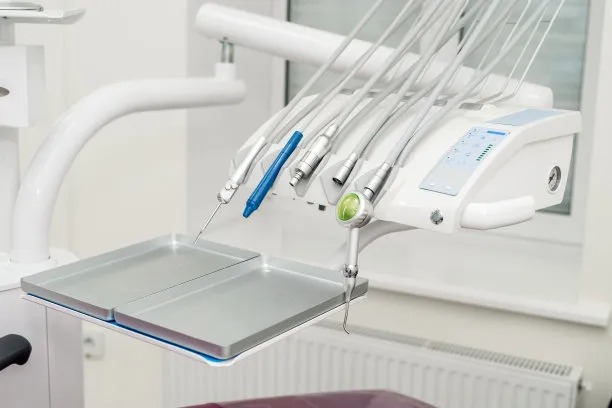The Essential Steps and Aftercare for Extracting a Tooth Safely and Comfortably at the Dentist
Summary: Dental extractions are common procedures undertaken to maintain oral health, often requiring a careful approach to ensure the patients comfort and safety. This article outlines the essential steps taken by dentists during tooth extractions, including preparation, the extraction process itself, post-procedure care, and managing potential complications. Each step is critical in reducing anxiety, preventing infection, and facilitating a smooth recovery. Understanding these aspects can greatly enhance the experience for individuals undergoing this procedure and promote better oral health outcomes.
1. Preparation for a Tooth Extraction

Before any dental procedure, thorough preparation is essential. The dentist should conduct a comprehensive evaluation, which includes a detailed medical history and a review of any medications the patient is taking. This step can identify potential risks and allergies, ensuring necessary precautions are taken.
Furthermore, diagnostic imaging, such as X-rays, plays a crucial role in understanding the exact position and condition of the tooth to be extracted. This information also aids in planning the procedure and foreseeing any complications that may arise during extraction.
Additionally, communicating with the patient about the procedure is vital. The dentist should explain what to expect, address any concerns, and provide information about anesthesia options to help ease the patient’s anxiety and ensure a comfortable experience.
2. The Extraction Process Explained
The actual extraction process begins with administering anesthesia to ensure that the patient feels no pain during the procedure. This can be local anesthesia, which numbs the specific area, or sedation options for patients who experience high levels of anxiety.
Once the area is numb, the dentist employs various techniques to loosen the tooth safely. These techniques may include the use of dental elevators and forceps. The dentist’s expertise is essential here, as it requires skill to avoid damaging surrounding tissues while carefully extracting the tooth.
Its worth noting that the extraction process can vary depending on whether the tooth is impacted or not. Impacted teeth may require a more complex approach, such as removing some surrounding bone or gum tissue. The dentist should explain these variations to the patient beforehand, ensuring they are well-informed about their specific situation.
3. Post-Extraction Care for Patients
After the extraction, post-procedure care is critical to prevent infection and promote healing. Patients typically receive instructions on how to manage pain and swelling effectively. Over-the-counter pain relievers or prescribed medications can help alleviate discomfort during the initial healing period.
Maintaining oral hygiene is also emphasized, but patients should be advised to avoid swishing vigorously or using a straw for the first few days to prevent dislodging blood clots that form in the extraction site. Gentle rinsing with warm salt water may be encouraged to assist in cleanliness without disruption.
Furthermore, dietary recommendations should be given—soft foods are best for the initial days post-extraction. Patients are advised to avoid hard, crunchy, or spicy foods that may irritate the extraction site. Staying hydrated while remaining cautious about food choices can facilitate a smoother recovery.
4. Managing Complications After Extraction
Understanding potential complications is essential for patients who have undergone a tooth extraction. One common issue is dry socket, which occurs when the blood clot that protects the extraction site dislodges, exposing underlying nerves and bone. Early symptoms include severe pain and visible changes at the extraction site.
Should this occur, it’s crucial for patients to contact their dentist promptly. The dentist can offer treatments, such as medicated dressings, to alleviate discomfort and promote healing. This highlights the importance of follow-up appointments after the extraction, as they allow for assessment and address any concerns arising during recovery.
Additionally, monitoring for signs of infection—such as increased swelling, fever, or pus—should be part of any post-extraction checklist. Patients should feel empowered to report any unusual symptoms without hesitation, knowing that proactive communication can significantly improve outcomes.
Summary: Understanding the essential steps and aftercare for a tooth extraction can alleviate anxiety and promote a smoother recovery. Through proper preparation, a well-executed extraction process, detailed post-care instructions, and management of potential complications, both dentists and patients can work together to ensure the procedure is safe and comfortable. Knowledge is power, and being informed can greatly enhance patient experience during dental extractions.
This article is compiled by Vickong Dental and the content is for reference only.



